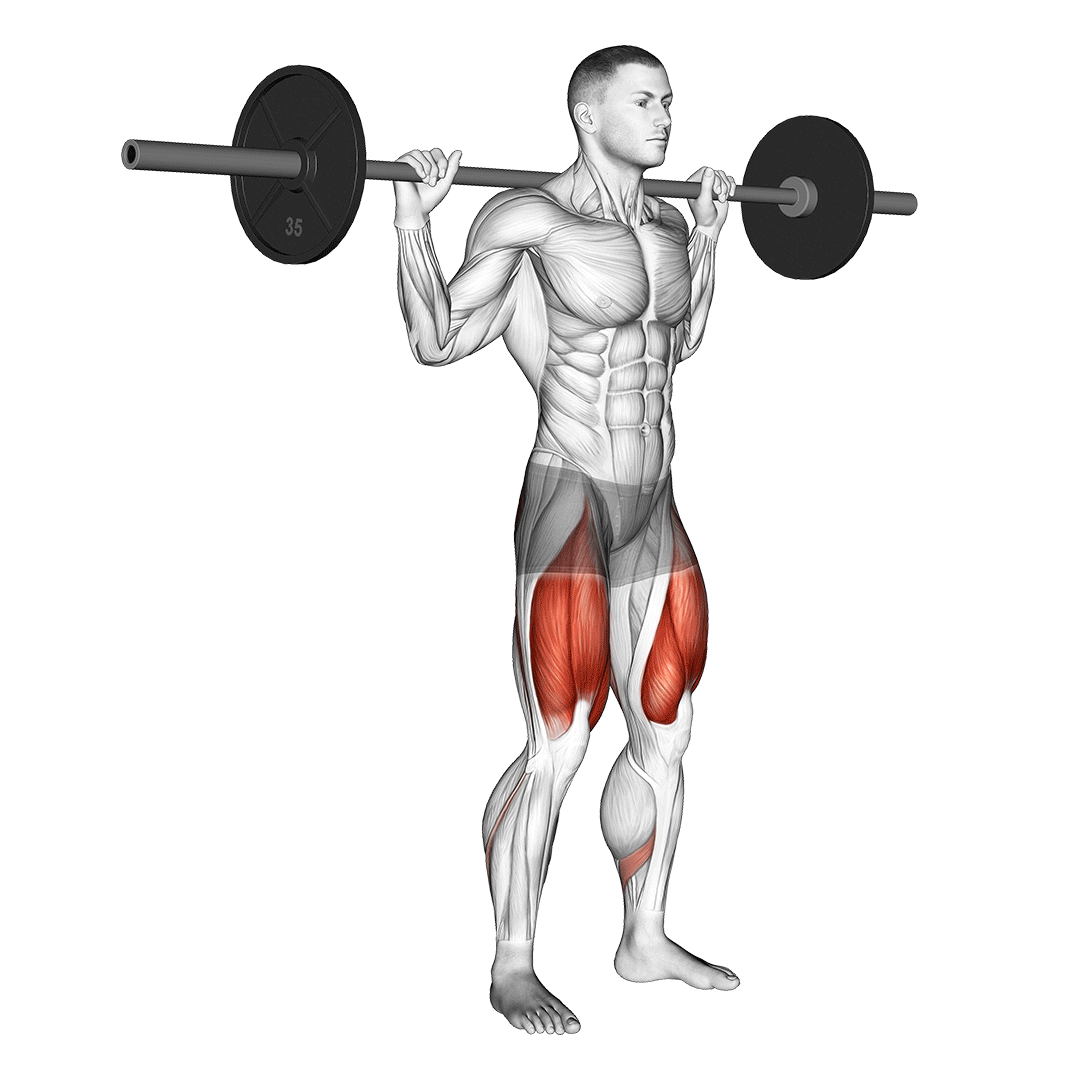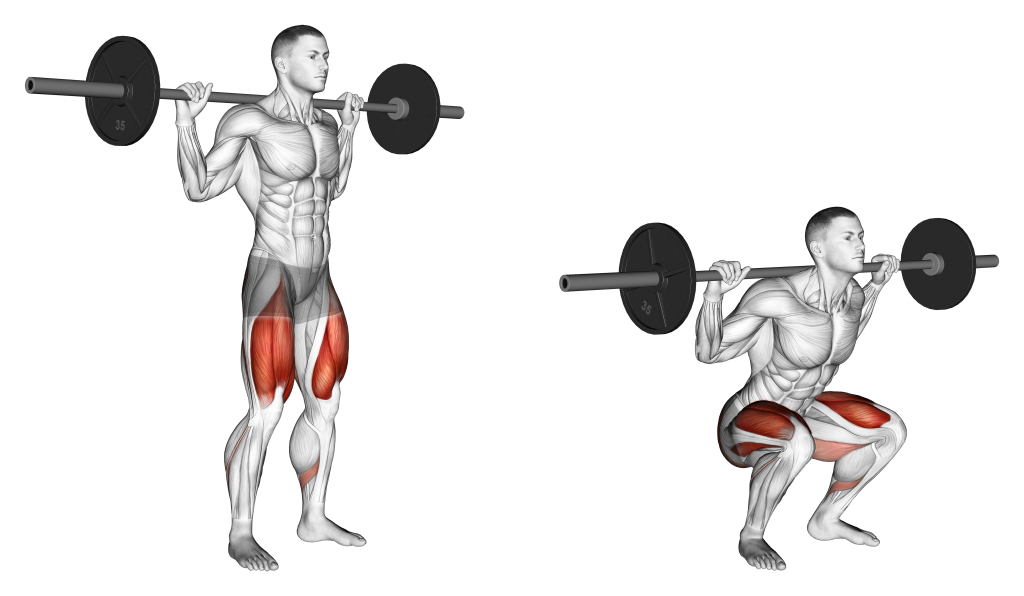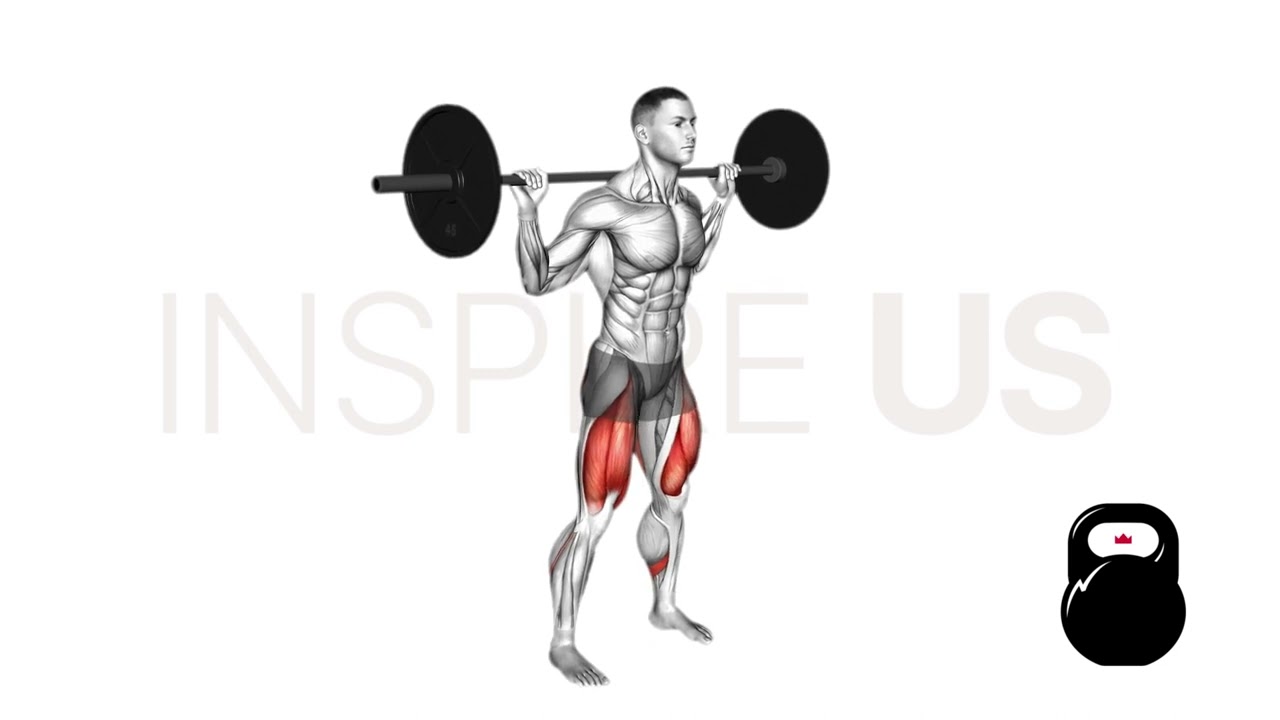High Bar Squat: Benefits, Muscles Worked, and More
A simple change on the ever-effective “king of exercises”, the high bar squat is added to practically every weightlifting routine for the purposes of growing the leg muscles.
First, it is important to establish what the conventional squat even is; a heavy barbell-based movement performed as the centerpiece of any bodybuilding or strength-building leg workout, often for only a few repetitions due to the sheer intensity involved.
Though the majority of lifters recommend its low bar counterpart, the high bar squat is nonetheless mechanically and functionally identical, and is a highly effective exercise for targeting the legs and core with a few additional benefits that the former exercise does not offer.
What is the High Bar Squat?
In more technical terms, the high bar squat is a free weight multi-joint compound exercise often performed with moderate to high amounts of weight and a low volume of repetitions per set.

It is encountered in nearly every form of resistance training program, and is considered a variation of the low bar squat - though both are grouped together simply under the name “squat”.
Who Should Perform the High Bar Squat?
The high bar squat is appropriate for lifters of all experience levels and goals, though those with a history of back, knee or hip injuries may wish to avoid it due to the intensity of the exercise.
In more niche circumstances, lifters experiencing upper back rounding or shoulder discomfort with the low bar squat may find that the high bar squat is somewhat more comfortable for their physiology.
Equipment Needed for High Bar Squats
High bar squats will require a barbell and set of weight plates, though ideally they will also be performed with some sort of barbell rack as well.
How to do a High Bar Squat
To perform a repetition of the high bar squat, the lifter will step into a clear space with the bar atop their trapezius, rather than beneath it.
The feet should be set wider than hip-width apart and the hands securing the barbell at a comfortable distance.
Bracing the core and keeping the head facing forward, the lifter will then bend at the hips and knees simultaneously, lowering their pelvis as if sitting on a chair.
Once the knees are parallel with the hips in a horizontal plane, the lifter will then push through their heels, simultaneously extending their hips and knees until they have returned to a standing position, thereby completing the repetition.
What Muscles are Worked by the High Bar Squat?
As a compound exercise, the high bar squat will work a multitude of muscle groups simultaneously - although not in equal capacity, as some muscles will be utilized in a far more intense and dynamic way than others.

It is the former muscles that receive the most benefit from the high bar squat, and are called the primary mover muscles, while those other muscle groups that are utilized only sparingly or in a stabilizing capacity are called the secondary mover muscles.
Primary Mover Muscles
The muscles worked to the greatest extent by the high bar squat are; the quadriceps femoris, the gluteus muscle group, and the various muscles of the hamstrings.
Secondary Mover Muscles and Stabilizers
Other muscle groups that are recruited to a lesser or stabilizing capacity are; the core muscles, the hip flexors, the erector spinae and the muscles of the calves.
What are the Benefits of Doing High Bar Squats?
Apart from the usual benefits of performing resistance exercises like better cardiovascular health and stronger joints, high bar squats present several positive effects that are almost entirely unique to it alone - even when compared to its low bar cousin.
Greater Quadriceps Recruitment
One undeniable benefit of high bar squats is the fact that the angle of resistance is more vertical, and thereby will place more of the resistance on the muscles of the quadriceps femoris.
In turn, this will cause the quads to benefit more greatly than they would if a low bar squat were being performed - or any other squat variation (apart from front squats) for the matter.
Stronger quadriceps equates to a more stable and injury-resistant pair of knee joints, as well as improvements in all activities that involve the legs in some way.
Less Lower Back Stress
The low bar squat is infamous for taxing the lower back if it is performed with even slight errors in form, as the position of the weight atop the shoulder shelf can alter the curvature of the spine out of a neutral position.
The high bar squat does not have this particular issue, as it features an almost entirely vertical angle of resistance, thereby only compressing the spine downwards, rather than featuring a horizontal tilt.
Keep in mind that this does not mean the high bar squat cannot result in spinal strain, only that it is more likely to take place in the form of upper back rounding, rather than in the lower back.
More Natural Movement and Balance
Though it will depend on the lifter, their proportions or their mobility - some may find that the high bar squat feels more comfortable and natural to perform, especially in regards to the position of the bar atop the trapezius.
Such a difference in comfort may be due to the fact that the high bar squat allows the lifter to place the majority of their weight on their mid-foot, rather than the heels, allowing for better balance, especially for flat-footed individuals.
Otherwise, it could also be because of discomfort from having a heavy barbell atop their shoulder shelf - an issue which may be corrected either by using a barbell pad or switching to a high bar squat.
Improved Lower Body Strength, Size, and Power
Like most other squat variations, the high bar squat produces the ideal training stimulus for growing the muscles of the lower body in all aspects of athleticism, from bodybuilding to sprinting, hence its inclusion in nearly every form of modern training program.
Regular performance of the high bar squat, combined with proper recovery and diet, will undoubtedly be sufficient to induce hypertrophy and strength developments in the quads, glutes, hamstrings and many others.
Common Mistakes of High Bar Squats
As a technically complex movement, the high bar squat will occasionally be performed with a few errors in form - some of which are quite common, even in more experienced weightlifters.
For the best and safest execution of the high bar squat, it is important to correct the following common mistakes as soon as possible, as leaving them unchecked could lead to injury or generally poor progression.
Rounding the Upper Back and Shoulders
One particularly egregious mistake lifters will make when performing a high bar squat is allowing the upper back to round, either by bending forward or by rotating the shoulders upwards and inwards.
Both cases are caused either by failing to properly brace the core or by attempting to lift an excessive amount of weight, and can easily result in injuries to the spine and poor execution of the high bar squat itself.
Throughout the exercise, it is important to maintain a neutral spinal curvature, and to ensure that the torso stays in a more upright position than it would be with a low bar squat. One form cue powerlifters use is to “push” the chest outwards and upwards as they maintain intra-abdominal pressure.
Heels Rising From the Floor
Allowing the heels to rise from the floor can easily lead to the lifter failing to balance properly - especially during a high bar squat, where much of the resistance is vertically angled, potentially stressing the calves and ankle joints.
If unable to perform a high bar squat without needing to raise the heels from the ground, the lifter should perform additional ankle mobility work and look into purchasing specialized footwear for performing squats.
Feet Set Too Close Together
The high bar squat features a slightly wider range of motion than other squat variations due to the more upright positioning of the torso - a factor that should be compensated for by setting the feet an appropriate distance apart, allowing for a more stable stance and providing the hips enough space to descend as needed.
Though it will depend on the lifter and their proportions, generally placing the feet wider than hip-width apart with the toes facing slightly outwards is the ideal starting stance for the high bar squat.
High Bar Squats vs Low Bar Squats - Which to Choose?
A common debate among fitness communities is which exercise is better - the high bar squat, or the low bar squat?
In the end, it will come down to two primary factors; the goals of the lifter in terms of muscular training, as well as which exercise is more comfortable for them.
Muscular Recruitment
The first factor divides the high bar squat and the low bar squat by the focus of their muscular recruitment pattern, with the low bar squat placing greater resistance on the posterior chain, whereas the high bar squat is better for quadriceps training.
Compatibility
Once the lifter has identified which muscle they wish to focus on more, they must also account for whether the exercise is compatible with their physiology and mobility.
Some lifters will find that the low bar squat is preferable to the high bar squat because of poor ankle mobility or that they dislike the additional range of motion, whereas others may find the low bar squat to be painful on the shoulders and difficult to balance with.
In the end, it is up to the lifter to see which exercise is preferable for them - and to keep in mind that their choices are not solely constrained to the high bar or low bar squat.
In Conclusion
Despite its involvement in the high bar vs. low bar debate, there are few who doubt the effectiveness of the high bar squat as a training movement.
With regular performance, the high bar squat is effective at developing a lifter in nearly every aspect of physical fitness, and is absolutely essential to any sort of weightlifting training program.
And, as always, if you are unsure of a certain aspect of the high bar squat, it is a good idea to consult with an experienced coach so as to optimize your training in the fastest way possible.
References
1. McKean, M. R., Dunn, P. K., & Burkett, B. J. (2010). Quantifying the movement and the influence of load in the back squat exercise. The Journal of Strength & Conditioning Research, 24(6), 1671-1679
2. Murawa M, Fryzowicz A, Kabacinski J, Jurga J, Gorwa J, Galli M, Zago M. Muscle activation varies between high-bar and low-bar back squat. PeerJ. 2020 Jun 8;8:e9256. doi: 10.7717/peerj.9256. PMID: 32551198; PMCID: PMC7289144.

